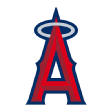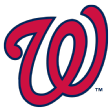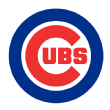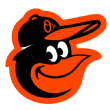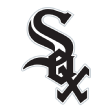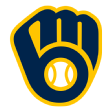Is the Astros' title tarnished? Is Jeter overrated? We settle the biggest debate for all 30 MLB teams

No matter which MLB team you root for, there's that one big debate that is sure to get your fan base fired up. What if a different decision had been made in that crucial spot that went horribly wrong? Which icon is truly the biggest star in franchise history? Just how should the rest of the league remember your star player?
Well, we set out to put an end to these heated arguments once and for all by having Bradford Doolittle, Sam Miller, David Schoenfield and Jeff Passan weigh in with their final word on one debate for all 30 teams.
Jump to a debate type:
Game debates| How players measure up
Title talk| Playing what-if
Historically speaking| Off-the-field topics
Jump to a franchise:
American League
BAL | BOS | CHW | CLE|DET
HOU | KC| LAA | MIN|NYY
OAK | SEA |TB|TEX | TOR
National League
ARI | ATL | CHC | CIN|COL
LAD | MIA | | MIL | NYM |PHI
PIT | SD | SF |STL | WSH
Game-related debates
Which is the most iconic home run in Jays history: Joe Carter's walk-off in '93 or Jose Bautista's bat flip?
One of the great joys in writing a story like this is learning something new. To ensure I didn't say something particularly stupid and draw the ire and wrath of our fine neighbors to the north, I reached out to a couple of Toronto-based writer friends and a Blue Jays fan.
Before consulting them, I was leaning toward Carter, who literally won a World Series with his home run off Mitch Williams in 1993. In 2015, Bautista hit the most renowned home run of his generation. Two great choices. Until the writers each gave me the same, "Yeah, but ... "
I've got to admit: I knew nothing about Roberto Alomar's home run against Dennis Eckersley in Game 4 of the 1992 American League Championship Series. And yet it was the one that both writers mentioned. It was, they said, cathartic, a release of all the bad juju remaining from blowing a 3-1 ALCS lead to Kansas City in 1985. Carter's home run, as historic as it was -- only the second ever to outright win a World Series -- completed the Jays' second championship in two years too.
The stakes for Bautista's home run were not the same. It was a win-or-go-home Game 5 against Texas -- in the division series. Still, the nature of the game, regardless of how early in the playoffs it came, gave it more gravitas than usual. And when Bautista launched a 97 mph Sam Dyson fastball into the second deck at Rogers Centre, it too felt like a liberating moment.
Only this wasn't for just Canada. It was for players from the Dominican Republic, who for so long had been taught that stoicism was baseball's overriding ethos. It was for the younger generation, which wanted to show joy only to be reminded that it was disrespectful. When Bautista chucked his bat with a fistful of joy/rage, he marked the beginning of a new era. If this season ever begins, it will be the Year 5 AF -- After Flip.
So while my instinct at first said Carter, and I certainly couldn't argue with that choice, the existence of Alomar's home run, and its place in the hearts and minds of Blue Jays fans, slightly lessens its impact. Bautista's home run and bat flip, on the other hand, have no restrictor plate. They are uninhibited, boundless, pure. They are the perfect home run and the perfect reaction. Joe Carter won a World Series. Jose Bautista won a generation. -- Jeff Passan
Is Jack Morris' 1-0 win in Game 7 of the 1991 World Series the ultimate pitching performance of all time?
Note the wording here: We didn't say dominant. If you want pure dominance, you can go with Kerry Wood's 20-strikeout game or one of Nolan Ryan's no-hitters or the best of Sandy Koufax or Max Scherzer or somebody else. Even in terms of best World Series performances, Morris' 10-inning shutout in 1991 rates just tied for 40th on the list for highest game score at 84. Certainly, you could argue for Don Larsen's perfect game, which scores a 94, tied for the second highest in World Series history (behind Babe Ruth's 14-inning start in 1916).
But Larsen's game came in Game 5. The ultimate game of any baseball season is a Game 7, so for the ultimate pitching performance of all time, I'm narrowing my options to Game 7 outings only. There have been 10 complete-game shutouts in a Game 7. Our options for ultimate performance come down to four games:
Johnny Podres in 1955, finally pitching Brooklyn to a title with a 2-0 victory over the Yankees.
Ralph Terry of the Yankees beating the Giants 1-0 in 1962, the game ending on Willie McCovey's famous line drive with runners on second and third.
Koufax's 2-0 victory over the Twins in 1965, pitching on two days of rest.
Morris' gem to beat the Braves.
Koufax has the highest game score of the four at 88, with Morris second at 84 (also the top two overall Game 7 starts). So it's Koufax vs. Morris. I'm going with the guy who went 10 innings, a dramatic end to arguably the most exciting World Series ever played. In a scoreless duel against John Smoltz, there was no margin for error. The big moment came in the eighth inning, when the Braves loaded the bases with one out and Morris induced Sid Bream to hit into a 3-2-3 double play.
Morris had thrown 118 pitches through nine innings. Manager Tom Kelly was going to take him out. "I can pitch," Morris said. Kelly's response: "Oh, hell, it's only a game." -- David Schoenfield
Should Mike Jirschele have waved Alex Gordon home in Game 7 of the 2014 World Series?
One year later, in the World Series against the Mets, the Royals would have a runner on third representing the tying run with two outs in the ninth and the ball in the hands of an infielder. That runner, Eric Hosmer, would gamble and race home, score on a wild throw and dog pile in victory an hour later. But in 2014, Gordon would obey his coach's stop sign and get stranded at third while the Giants celebrated around him. Put that way, it feels as though the Royals acted against their natural character by holding Gordon and paid for it.
But that gets the Royals' character wrong. A couple of things made those 2014-15 Royals distinctive. One was, yes, they were incredibly aggressive, put pressure on their opponents and forced defenses to make plays (or make mistakes). But it wasn't willy-nilly pressure. The Royals found their opponents' weaknesses and then put unrelenting pressure on those weaknesses -- most famously by identifying and then exploiting Jon Lester's unwillingness to throw to first in the 2014 wild-card game. When Hosmer went home to tie Game 5 of the 2015 World Series, he wasn't running for the sake of aggression but because he'd been prepared to look for opportunities against Lucas Duda's flimsy throwing arm. By contrast, putting pressure on Brandon Crawford's elite throwing arm is mere recklessness, like putting "pressure" on an army that's 10 times the size and 10 times as fortified. You can't just treat every major leaguer like he's Lucas Duda. Pointing at Crawford and saying "that's a Duda" has no power.
The other part of the Royals' character was trust in their players. They almost never pinch-hit, they gave their starters long leashes, they let relievers throw full innings, they let players steal on their own and call their own sacrifice bunts. It was an act of trust in Hosmer that empowered him to race home. And it was an act of trust in Salvador Perez that caused them to hold Gordon. Perez had been one of their best hitters, he'd homered off Madison Bumgarner in that series, he was trustworthy. They stopped Gordon because they trusted their ballplayers.
We're talking about the Royals' character a lot here because, ultimately, either choice they made was likely to lose. Gordon had very little chance. Crawford could have thrown wildly, Buster Posey could have botched the catch or the tag, but if neither happened Gordon was probably 30 feet behind where he needed to be. But Perez also had very little chance against Bumgarner at that moment in history. That's just the nature of trailing: You're probably going to lose! No matter what their third-base coach decided, they had a small chance to win and a much larger chance to lose. Might as well go out playing the way you believe in, and ultimately, that's what the Royals did. -- Sam Miller
Was it a mistake to have Mitch Williams out there in Game 6 of the 1993 World Series?
I'll never forget watching this game with my dad. When Jim Fregosi brought Williams in to protect a 6-5 lead, my dad looks at me and says, "Why the hell is he bringing this guy into the game?" Twenty-one pitches later, Phillies fans were asking the same question after Joe Carter blasted his World Series-winning home run.
When I first examined this question, my initial thought was that this was a good case of second-guessing. Williams blew the save, ergo it was a bad decision, forgetting that Williams had saved 43 games that season -- tightrope or not, he usually got the job done. Yes, he had pitched poorly in Game 4, allowing three runs in two-thirds of an inning, but in his previous five postseason appearances that year he had allowed just one earned run in seven innings.
But then I think back to watching the game -- and you knew Williams was going to blow it. In fact, his blown save in Game 4 was his third blown save of the postseason. He had blown save opportunities in Games 1 and 5 of the National League Championship Series, although the Phillies managed to win both games (Williams got both wins). Factoring his poor outing in Game 4 of the World Series, his entire postseason line entering the game read 7 IP, 5 R, 4 ER, 9 H, 5 BB, 6 SO.
Then there are the specifics of the situation he was entering. The leadoff hitter for the Jays in the bottom of the ninth was Rickey Henderson. So you have one of the best of all time at drawing walks, with the platoon advantage, against a pitcher who has trouble throwing strikes. Larry Andersen had gotten the final two outs of the eighth and held righties to a .199 average that year. He should have at least faced Henderson. Henderson walked, Paul Molitor (another right-handed batter) singled with one out and then Carter homered. Williams never should have been in there. -- David Schoenfield
Did the Mets ruin Johan Santana by letting him finish his no-hitter?
Santana threw 134 pitches in his no-hitter on June 1, 2012 -- still the only no-hitter in Mets history. After the no-hitter his ERA stood at 2.38. He'd make 10 more starts that season with an 8.27 ERA and went on the injured list in August with inflammation in his lower back. In spring training in 2013, an MRI revealed he had torn the shoulder capsule in his left arm. He never made it back to the majors.
Santana was on a 115-pitch limit in 2012, but manager Terry Collins let Santana make the decision to stay in the game. Years later, Collins still struggled with his choice. Even though Santana had no regrets over what unfolded afterward, Collins said that didn't make him feel any less anguish. "Not really," he told Sports Illustrated in 2015.
Was the no-hitter to blame? Probably not. An extra 19 pitches in itself isn't going cause the injury. The Mets were cautious and gave Santana six days of rest before his next start. On June 30, he even pitched eight shutout innings against the Dodgers. Clearly something was wrong over his final five starts, however, when he allowed 33 runs over 19 innings. The back injury could have been the result of favoring the shoulder, even if the Mets didn't discover the injury until the following spring.
More important, Santana had already missed the entire 2011 season with the same capsule injury to his shoulder. He was likely to break down at some point -- even if Collins had pulled him after seven innings that night. -- David Schoenfield
Did Matt Holliday ever touch home plate?
Matt Holliday is a 12-letter curse word in San Diego. Padres fans are still convinced Holliday's left hand never came into contact with home plate during his awkward, face-in-the-ground slide in the bottom of the 13th inning of a win-or-go-home Game 163 in 2007 between his Rockies and the Padres. Umpire Tim McClelland called him safe. The Rockies wound up going to the World Series. The Padres went home for the winter.
I watched and rewatched the video a dozen times, and no angle definitively shows Holliday's left hand touching the plate. Michael Barrett, the Padres' catcher, straddles the plate and positions his left spike masterfully, seemingly denying Holliday's stab at the plate. Is it possible that a skin cell of Holliday came into contact with an atom of the plate, though? Sure. It's possible.
And that possibility compelled me to do the obvious: text the person in question and ask him about the action at hand.
"Padres fans love to DM me on Twitter," Holliday said. "Wish Tim McClelland had a Twitter so they could share their sour grapes with him."
They might have more to say after reading Holliday's answer to the question.
"Who knows? I probably didn't," Holliday said. "But he didn't even catch the ball and make a clean tag."
This is correct. Barrett did not catch the ball and did not make a tag. He could have recovered and tagged out Holliday, but McClelland's safe call in the pre-replay era rendered that moot. In fact, Holliday probably would've been safe today regardless because Barrett was blocking the plate, a now-banned maneuver.
So, sorry, Padres fans. Bleat your grievances loudly. Complain as you will. It's warranted. Just stop harassing poor Matt Holliday. It's not his fault. -- Jeff Passan
How do they measure up?
Which member of the Red Sox belongs on the Boston sports Mount Rushmore: Ted Williams or David Ortiz?
Full disclosure: I've had to write six of these so far, and I've loved doing all of them. This is the seventh, and it terrifies me. When you're supposed to answer a question and you feel awful about both answers because there are such great points to counter either, that takes away some of the fun.
What gives me solace is that Boston's Rushmore already has one of these situations: Bill Russell and Larry Bird. Russell is the right answer, but Bird is one of the 10 best NBA players ever, and his omission just doesn't feel right.
The comparison between Ted Williams and David Ortiz isn't quite the same. Williams didn't win championship after championship like Russell. He didn't win any. He was just someone who wanted to be called the greatest hitter who ever lived, and if he didn't live up to that billing, he is right there with a couple of guys named Ruth and Bonds. Ortiz won three World Series, including the first in 86 years for the Red Sox. He was charismatic, he was clutch, he was magnetic. Ortiz was not one of the 10 best players ever. He was not one of the 100 best players ever. He was just Big Papi, inimitable in his cool, unshakeable in his swag, the guy who in his last World Series batted .688 and struck out once in 25 plate appearances.
The right answer here is Williams, of course, because he was the better player by a sizable margin, and Mount Rushmore theoretically attempts to honor the best. But look at the Boston sports Rushmore. Tom Brady: six championships. Bill Russell: 11 championships. Bobby Orr: two championships. Boston's Rushmore is for those who were most implacable at the most important moments. That was David Ortiz.
It was Ted Williams too, in his heroic military service, in his choice to play in the last game of the 1941 season and put his .400 batting average on the line, in his general disposition in life. It wasn't his fault his teammates could get him to a World Series only once. Penalizing him for their doings is unfair. But so is this process. Boston's Rushmore celebrates champions. It's time to chisel a new face, Big Papi's, alongside Russell, Brady and Orr.-- Jeff Passan
Did Miguel Cabrera deserve to win AL MVP over Mike Trout in 2012 (and 2013)?
As any Tigers fan knows, winning the Triple Crown is an extraordinarily difficult accomplishment. It's not enough to be a great hitter having a great season. The Triple Crown chaser needs to have his greatness distributed across three categories (which overlap some, but not entirely), and he needs to hope nobody else in baseball happens to have a career year in any of those categories. Some of that is out of his control, some of it is a little arbitrary, a lot of it depends on his superlative greatness, and the combined challenge of those forces -- we went more than 40 years without anyone doing it! -- is what produces so much suspense and so much pressure. Cabrera stood up to that pressure and he finished the danged job. Here's how hard it is to win the Triple Crown: Miguel Cabrera has had four offensive seasons better than he had in 2012, and he didn't win the Triple Crown in any of them.
Of course Miguel Cabrera shouldn't have been the MVP in 2012. He led the league in three offensive stats that history and culture have determined add up to something Very Special when won simultaneously. But he wasn't more valuable than Mike Trout. He shouldn't have won the Cy Young Award either. He shouldn't have won the Rookie of the Year award, and he shouldn't be declared the year's World Series champion. Those honors are all for things other than "home run, RBI and batting crowns won simultaneously." Only the Triple Crown is for that.
Some might take that statement as demeaning to the Triple Crown. It's not. It's the opposite. The Triple Crown is enough. It doesn't need further validation. You don't win the Triple Crown so that you can cash it in for something bigger. The Triple Crown is the bigger thing. In the past 50 years, 101 players have won MVP awards. Only one has won the Triple Crown. The biggest mistake any Tigers fans or Cabrera stans made was coupling the two. All they did was make the Triple Crown look subservient, which -- for 44 years -- every baseball fan alive had known with wholehearted conviction, it was not. -- Sam Miller
How much will lack of playoff success hurt Mike Trout's all-time place?
If you've been watching "The Last Dance" about Michael Jordan and the Chicago Bulls, you'll hear Jordan say that he had to win a championship to be considered on the same level as Magic Johnson and Larry Bird. He'd won scoring titles and an MVP award, but it wasn't enough. He had to win a championship. That's the way it works in basketball. In football, a great quarterback has to win a Super Bowl.
Baseball, though? Baseball is different. No doubt performing well in the postseason can elevate a player's status -- think Sandy Koufax or Bob Gibson or Derek Jeter. Has any player's legacy really been hurt by a lack of playoff success? I guess you could say Clayton Kershaw's.
But Trout isn't in the same boat as Kershaw, who has lost big games at the wrong time. Trout simply hasn't had the opportunity, with the Angels making the playoffs just once in his career (and getting swept). Trout is Ted Williams. The Red Sox made the World Series once in Williams' career and he hit .200 with one RBI as Boston lost in seven games. That lack of playoff success certainly didn't hurt Williams' legacy as perhaps the greatest hitter of all time. Trout is Ken Griffey Jr., who never played in a World Series. Trout is Ernie Banks, who never played in the postseason. Heck, Willie Mays hit .239 with no home runs in 20 World Series games. He's still considered by many to be the greatest player of all time.
In baseball, we view players through the lens of the regular season. The postseason is kind of like extra credit. Trout hasn't earned any extra credit. But he's so good he might not need to. -- David Schoenfield
Kershaw or Koufax?
One of the best things about the great Dodgers teams of recent vintage is just how connected their current players have stayed to the stars of the past. Dave Roberts has a relationship with Tommy Lasorda. Kenley Jansen had a touching friendship with the late Don Newcombe. And Clayton Kershaw and Sandy Koufax -- two of the best lefties to ever lace up the spikes -- have formed a terrific friendship. They would be the last ones to chime in on the debate we are waging here.
But it's a great debate! Two all-time-great lefties, a couple of generations apart, toiling for the same franchise, who were at their best in the same ballpark. They played in very different eras when very different things were asked of starting pitchers. Kershaw has now completed 12 big league seasons, the number Koufax retired with, so the debate is a timely one. It's one you could write a book about too, so we'll be unfairly summarizing it.
The gist of the first point is that there is more to separate the two in terms of regular-season performance than you'd guess by glancing at box score stats. Both had historically high winning percentages (.695 for Kershaw, .655 for Koufax), though the former has always been spared the problem of coughing up a lead in the late innings. In terms of ERA against the league average, Kershaw comes out pretty far ahead: He's been about 56% better than the league; Koufax was 31% better. Koufax won ERA titles in each of his final five seasons, but his numbers were compiled in a very low-run era. Folding it all into metrics, Kershaw's ability to find himself at a younger age left him with 65.3 bWAR through 12 seasons and 47.1 wins above average. Koufax was at 53.1 and 30.6.
So that's a comfortable edge for Kershaw, and he's got a few more years to add to that advantage. Few pitchers have had four- or five-year stretches to rival what Koufax did from 1962 on, but one of them arguably is Kershaw. However, consider this: Koufax retired at his peak, going 111-34 with a 1.95 ERA and nearly 300 strikeouts per season over his final five years. He was just 30 when he retired because of horrific elbow trouble, something that might have been prevented and/or fixed in a contemporary sports medicine paradigm. We don't know how long that epic peak might have lasted. As it stands, Kershaw has more historically high peak seasons on his résumé. But what we can say is that Koufax from ages 27 to 30 was far better than Kershaw at ages 27 to 30, and who is to say how long he might have pressed that advantage?
Alas, we can't leave the postseason out of this equation. Kershaw has logged 158 playoff innings so far -- nearly a complete season. And he's 9-11 with a 4.43 ERA that is more than two runs above his regular-season mark. Koufax got into eight postseason games, accounting for 57 of the most memorable World Series innings of all time. He went just 4-3, somehow, but put up a 0.95 ERA during those outings. Most famously, he threw two shutouts to carry the Dodgers to the 1965 championship, the latter coming on two days' rest.
So how do we roll all that into a bottom line? Well, a good metric for doing it is the championship probability metric at TheBaseballGauge.com, a combined number for regular-season and postseason play. Here is where the impact of Koufax's high-stakes performance is quantified. His .741 postseason CPA ranks 15th in history. His combined figure, including the regular season, of 1.386 is the second-highest among pitchers (12th overall among all players) since 1920, which is as far back as the metric is calculated. For Kershaw, the comparable number is a pedestrian .112, once you fold in his postseason mark of minus-.116. Kershaw will have to continue to put up good regular-season numbers while helping the Dodgers to a championship before we can place him on the same pedestal as Koufax.-- Bradford Doolittle
Is Derek Jeter overrated?
When I was in college, the New York Yankees were smack in the middle of their latest dynasty. I had this friend named Paul, who was the sort of Yankees fan that makes every non-Yankees fan want to throw up. Honestly, he was the worst, and because the Yankees were so good, I couldn't argue with much of what he said. There was one thing that came out of his stupid mouth that I simply could not abide.
"Jeter is a surefire Hall of Famer and you know nothing about baseball," Paul said.
As he gleefully reminded me this year, two decades after uttering those words, he was right on the former (and, some might argue, the latter as well). And it reinforced the reality I've come to accept about Derek Jeter. Had he not been a Yankee for the entirety of his 20-year career -- not sheathed in New York mysticism, not the subject of enmity specifically because he wore pinstripes, not built up to be something he never was because parochial affection is hallucinogenic in its ability to warp minds -- the question of whether Derek Jeter is overrated wouldn't even exist.
But he was. And it does. So we might as well answer it.
Start with facts. Jeter was one of the best offensive shortstops in history -- maybe the best. Jeter was a slightly above-average defensive shortstop in his finest years and a bad one as he aged. Jeter possessed excellent instincts and admirable leadership skills. Jeter's numbers in the playoffs were almost identical to those during the regular season, and the win probability added for his playoff career spanning 158 games was 0.02, according to Baseball-Reference.com. That ... is not great.
The issue with rating any baseball player is the standard against which he's rated, and with Jeter, that standard lives on the ends of the continuum. Yankees fans stan Jeter. Yankees haters nitpick his flaws. If you are the irrational soul who thinks JETER IS A GOD and THE CAPTAIN IS AMAZING, sorry: He's overrated. If you are the person who thinks he was a good player seen as great only because he was a Yankee, you can take a seat at Silky Johnson's tableand say he's not overrated.
All in all, final verdict: Yes, Derek Jeter is overrated by a group of people that speaks in all caps. Yes, Derek Jeter is underrated by a similar group that attributes his accomplishments to his Yankeeness. Ultimately, Derek Jeter is properly rated as one of the best shortstops and best Yankees ever because the combination of consistency and length of career is rare and enviable. -- Jeff Passan
Is Ichiro Suzuki baseball's true hit king?
I know what a Pete Rose loyalist would say to giving Ichiro Suzuki credit for hits he accumulated in Japan: "Well then why not give Rose credit for the 136 hits he had in Macon, Georgia, and his 160 in Tampa, Florida, and his 89 in Geneva, New York?"
Why not is because Rose was in those cities because he wasn't good enough to be in the majors yet. Those were minor leagues that had been created to give him a place to play until he was good enough to be a major leaguer. Ichiro, meanwhile, was playing in Kobe because he was born in Japan and those were the rules. He couldn't join a league in America until his team would let him. He was in Japan not because he wasn't good enough for America, but because he was Japanese. And saying Ichiro can't be the hit king because he's Japanese is ... well, it's icky.
Of course, one might still raise an objection if baseball in Japan were, like baseball in Macon, significantly easier than baseball in the American major leagues. It obviously wouldn't be fair to Rose to give his crown to somebody running circles around a semipro league. But that's not the case here, and we can see the continuity between Ichiro's stats in Nippon Professional Baseball and in the American League: In his seven full seasons in Japan, he hit .359. In his first season with the Mariners, he hit .351. Almost no drop. In his first 10 seasons with the Mariners, he hit .333. Some drop, but close enough to make it clear that Ichiro against Japanese pitching was pretty close to Ichiro against American League pitching, from which we can deduce that had Ichiro been in the AL from ages 20 to 26, he would have had huge averages and tons of hits. A slightly lower average, probably, but in a season 30 games longer. If we take a hypothetical Ichiro who came to the majors at age 20, like a typical top elite prospect, and hit .333, like a typical MLB Ichiro, in playing time scaled up to the longer MLB schedule, he would have had around 1,400 hits -- which is actually more than he had in Japan. It's not just that it's reasonable and fair to combine his Japanese stats and Seattle stats and compare the total to Rose. It's that Ichiro's career tally was probably disadvantaged by the circumstances.
The phrase "hit king" started showing up in articles in 1981, when Pete Rose set the NL record for hits. He was the NL hit king. Linguistically, that's a fine precedent: Pete Rose can still be the MLB hit king. He clearly had more hits in Major League Baseball, a specific pair of leagues, than anybody else. But Ichiro is the Hit King. He's the king of hits. -- Sam Miller
Title talk
Are the late-'90s Indians the best team never to win a World Series?
I want to just answer yes, because it's true, and I know this because I grew up in Cleveland during the '90s and devoted way too many hours at dial-up speeds diving into baseball history and trying to find another core this talented and this ringless. Just to show my work, the candidates include:
The 1907-09 Detroit Tigers, who lost three consecutive World Series with Ty Cobb and Sam Crawford. Good team. Not Indians good.
The 1911-17 New York Giants, who lost four World Series. Strong candidate, though their win in 1905 with their cog, Christy Mathewson, sort of invalidates them as ringless.
The 1946-50 Boston Red Sox, who lost one World Series but averaged 95 wins with a lineup that included Hall of Famers Ted Williams and Bobby Doerr.
The 1974-78 Los Angeles Dodgers, who lost three World Series. They were really, really good but had only one Hall of Famer in Don Sutton.
The 1995-2001 Indians, who lost two World Series and four other playoff series. Their core included Jim Thome, Manny Ramirez, Kenny Lofton, Albert Belle and Omar Vizquel. Others to play significant roles: Roberto Alomar, Carlos Baerga, David Justice, Eddie Murray and Travis Fryman. The '99 Indians scored 1,009 runs, the only team to exceed the four-figure mark since 1950. The '95 Indians lost the World Series to Atlanta -- which clearly would have been the answer to this question if not for that season -- and the '97 Indians lost in an extra-innings Game 7 walk-off to the Florida Marlins.
The late '90s/early-aughts Seattle Mariners, featuring Ken Griffey Jr., Alex Rodriguez, Randy Johnson, Ichiro Suzuki and Edgar Martinez, were special. They also never made a World Series, let alone lost one.
Perhaps you can include the 2011-14 Detroit Tigers, who lost only one World Series but had three first-ballot Hall of Famers in Justin Verlander, Max Scherzer and Miguel Cabrera, plus Victor Martinez, J.D. Martinez and plenty more talent.
The real threat to the Indians? The current incarnation of the Los Angeles Dodgers. Seven consecutive playoff appearances, two World Series losses, zero championships. They've got a no-doubt Hall of Famer in Clayton Kershaw, an on-his-way one in Kenley Jansen, a talented-enough-to-be one in Cody Bellinger and an array of awesome players otherwise. The Dodgers' window should remain open for a while yet, but at some point they need hardware.
Until then, this is the Indians' ignominious title to lose.-- Jeff Passan
How long will the Astros' 2017 World Series title be tarnished?
For the players, their 2017 title is tarnished forever. If you scroll back to the beginning of the season, every team set out to prove it was the best at baseball. The Astros failed to do that, plain and simple. If you keep scrolling back, back, back in time, to when these guys were kids trying to play catch without dropping it, or further still, to when the first ballplayers were organizing the first games -- the premise of every career, every league and every game was: Who can play baseball the best? Not: Who can cheat the best? The 2017 Astros cheated the best, but they did not prove that they played the best, and so they failed. Alex Bregman, Jose Altuve, George Springer and Carlos Correa could win the next 10 World Series, but they will have won only the next 10 World Series; they will and can never, ever, ever get credit for 2017, at least in the way they wanted it. And baseball history being baseball history, the memory won't ever fade; it'll grow into something even bigger, with even more moral clarity. The 2017 Astros will in 100 years be bigger villains than they are today.
But for Astros fans, the title is good. You're all good. You don't have to answer for what your team did. We're fans specifically because we're not participants. The detachment between what teams do (act) and what we do (hope, react) is what makes fandom such a mystical, suspenseful and ultimately tolerable pursuit, giving us a low-stakes way to feel the highest-stakes emotions. If you were an Astros fan who was specifically rooting for them to win by cheating, you probably have a personal journey to go on. But otherwise, no fan should be found complicit in their team's sins. If you enjoyed watching that title, you never need to feel a moment's guilt about it. -- Sam Miller
Are the 1990s Braves a "dynasty" despite winning only one World Series?
Being a kid in the '90s ruled. I'd get home from school, grab a snack, jump on the couch, grip the remote, click to TBS and watch America's team. That's what the Atlanta Braves were to us latchkeys. They were comforting, they were dominant, they were cool and man, were they good at baseball.
It's amazing to remember what those Braves did. Between 1991 and 2005, they won a division title in every completed season. That's 14 in a row. Fourteen! The present-day Dodgers are in the midst of an amazing run of division titles ... and they've won half of what those Braves did.
Greg Maddux. Tom Glavine. John Smoltz. Chipper Jones. Four first-ballot Hall of Famers were at the heart of that run. It was an obscene collection of talent. And that's why it pains me to write what I'm about to write. The 1991-2005 Braves were not a dynasty. They had dynastic talent. They had dynastic possibilities. But dynasties win championships, not divisions. The Braves' division championship seasons ended as follows:
Division series loss: 5
NLCS loss: 4
World Series loss: 4
World Series win: 1
The facts are too damning to allow my emotional attachment to overwhelm them. It's just the truth about the Braves, and it's illustrative of how difficult winning a championship really is. Synergy between general manager John Schuerholz and manager Bobby Cox. Savvy trades and free-agent signings. A pipeline of talent that just kept coming. The Braves were the model. Hell, they still are the model.
Every team just wants to buy itself a chance at grabbing a ring. The Braves got 14 of 'em, and they could cash in only one. They were a dynasty waiting to happen, only it never did.-- Jeff Passan
Were the "Even Year" Giants a dynasty?
The Zhou Dynasty ruled for 800 years and spanned almost 40 kings, as well as the births of Confucianism and Taoism and the evolution of written Chinese to its modern form. The Qin Dynasty ruled for 15 years under three sovereigns, one of whom died while searching for an immortality elixir he believed sea monsters were guarding. Both, you'll notice, get to be called "dynasty," which goes to show that there are both strong dynasties and weak ones.
The 2010-14 Giants definitely get to call themselves a dynasty, when they want to. Baseball isn't a sport where even the greatest teams can reliably win the World Series, so three championships in five years is definitely enough to consider a trend. Only eight teams in history have done it, depending on how you break up the Yankees' midcentury rolling dynasty; only three have done so in the division era, only two in the wild-card era, and only the Giants did so (partially) in the two-wild-card era. That there was so much overlap of stars and role players from the 2010 roster to the 2014 roster further bolsters the notion of era-spanning continuity for that group.
But every Giants fan also appreciates that they're a weak dynasty: They produced no great innovations, no great religions and little fear among their contemporaries. They won only the seventh-most games in baseball during that span. The same factors that make it so hard to build a championship dynasty in baseball -- the flukish aspects of small-sample postseason series -- are what made it relatively easy, or at least possible, for a team as weak as the Giants to do it. Very, very weak dynasty.
A more fun word for what the Giants did is "a run." They went on a run. It was an incredible run, one of the greatest runs of all time: three titles in five years, against a succession of better-on-paper teams! The word "dynasty" invites a little backlash. The word "run" invites us into that sense of awesome, nearly magical energy that the postseason Giants had. It was a weak dynasty but an epic run. -- Sam Miller
Playing what-if
What happens to baseball if the Rangers don't bid against themselves and give A-Rod $252 million?
To get the first thing out of the way: Signing Alex Rodriguez even at that price was not what hampered the Texas Rangers from 2001 to 2003. They lost with Rodriguez because, before they signed him, they were an old and mediocre last-place club with a merely average farm system and no demonstrated awareness of how to get good pitching. On a dollars-per-performance level, Rodriguez certainly wasn't a bargain, by the time Texas got through bidding against itself. But the Rangers already weren't going anywhere from 2001 to 2003. Rodriguez made them a lot more interesting, and he very nearly got them a young prospect named Robinson Cano. (They chose Joaquin Arias instead.)
But that's not how the world talked about it at the time, and one suspects the public perception of the contract -- that it had been a burden Texas simply couldn't carry -- is part of why Mike Trout is underpaid today. During the free-agency era to that point, "record" player salaries had typically replaced each other in rapid succession, sometimes multiple times in the same offseason. Each top free agent had a target to top, and that incremental inflation gradually pushed MLB salaries ever higher. But Rodriguez's deal -- not an unreasonable one, given his age and talent! -- was double the previous record (set two days earlier), so much higher that instead of lifting other superstars' pay, it essentially ended the progression.
It would be 18 years before another free agent signed a deal as large as the one Rodriguez signed, and in the meantime the very concept of an A-Rod-sized contract had been characterized, inaccurately, as franchise-crippling in Texas. Adjusted for inflation, today's stars aren't paid anywhere close to what Rodriguez got, or what they're probably "worth." MLB salaries continued to go up, but the top tier (outside of Rodriguez) rose much more slowly. -- Sam Miller
What if the Marlins had kept Stanton, Yelich & Co. together?
What if. Baseball is filled with what-ifs. But let's rewind the clock a couple of years and see where the Marlins would be if they hadn't traded Giancarlo Stanton, Christian Yelich, Marcell Ozuna and Dee Gordon after the 2017 season and J.T. Realmuto after the 2018 season.
We start with 2016. The Marlins went 79-83 that season with all those guys, plus Jose Fernandez heading the rotation. Fernandez died that September, and in 2017, with Stanton winning MVP honors with 59 home runs and Ozuna having a 37-homer season, the Marlins finished 77-85. If Fernandez had been alive? Maybe it's a different story. Tom Koehler, Vance Worley and Jeff Locke combined for 31 starts and minus-3.8 WAR. Let's say Fernandez makes those 31 starts and is worth 6.2 WAR. That's a 10-win difference -- enough for Miami to tie the Diamondbacks for a wild-card spot. Without Fernandez and now with new owners, the club decided to tear things up and start over.
It wasn't necessarily the wrong decision. Sure, the 2019 team would have had Yelich (7.0 WAR) and Realmuto (4.5 WAR), but Stanton was injured and Ozuna (1.9) and Gordon (0.8) have been nowhere near as good as they were in 2017. And the rest of the 2017 Marlins roster? Other than Brian Anderson, who played 25 games that year, and Miguel Rojas, there is basically no other value for 2019. While the trades were about dumping salary, Derek Jeter was correct in projecting that it was not going to be a playoff roster.
The bigger issue is whether the Marlins got enough back in those trades (jury remains out) and whether the Marlins' farm system will finally start producing top talent. Marlins fans might lament what Yelich has done the past two seasons in Milwaukee, but the Marlins still would have been the Marlins even with him and the others. -- David Schoenfield
Were the Nationals right not to pitch Stephen Strasburg in the 2012 postseason?
This question takes on a new dimension now that the Nationals have won a World Series -- with Strasburg the MVP of their playoff run. The Nationals can make the argument that shutting him down that season helped keep him healthy (for the most part) the following seven seasons, culminating in his dominant October in 2019.
So does what happened seven years later justify not using your best pitcher in 2012? For the franchise and for Strasburg, maybe so. He's made his millions and now he'll get a World Series ring. It's not that simple, however. What about other members of the 2012 team who haven't won a ring or will never get another opportunity? What about manager Davey Johnson, who with another title to go along with his 1986 championship with the Mets might be a Hall of Famer?
To say the decision was justified is to also assume that if Strasburg had pitched he would have gotten injured. It also assumes there were no other options available other than just shutting him down after 28 starts. The Nationals could have spread out his innings that season. They could have rested him earlier in the season, once it become clear they were a playoff team. They could have pitched him once every playoff series if the team had advanced. Would an extra 18 innings or so have affected his future?
You play to win. In the end, the 2012 Nationals decided not to field their best team. I would have figured out a way to use him -- and maybe the Nationals would now have two World Series titles.-- David Schoenfield
Did Dusty Baker "ruin" Mark Prior and Kerry Wood?
It's clear enough that Dusty Baker was part of a system, in the 1990s and early 2000s, that was not serving pitchers well. It was harder to pitch than it had ever been -- the offensive environment meant a lot of long, stressful innings -- while pitching was becoming more velocity- and strikeout-obsessed. Medical and training methods hadn't caught up to these demands, as they would later. On top of this, pitch counts were going down but probably not fast enough, and overuse -- particularly among younger pitchers -- was still egregious. The bottom line: There were only two, maybe three, pitchers born from 1969 to 1982 who made or are likely to make the Hall of Fame as starters: Pedro Martinez, Roy Halladay and maybe CC Sabathia. Not Kerry Wood, not Mark Prior, though each had once seemed on that track.
But you can almost never say which pitch was the one, or will be the one, to lead to an injury. If you have enough injured pitchers -- baseball certainly had enough! -- you can certainly go back and find bad decisions along the way. (If Bartolo Colon had washed out at 25, instead of at 45, we'd be screaming at Mike Hargrove for letting him throw 61 pitches in the first inning of his second major league start.) Baker asked a lot of his two aces; he didn't handle Prior and Wood the way he would if he could do it today. We know that because, like everybody else, he changed. He adapted. As we all learned, he learned.
When I was a kid, my parents sometimes let me ride in the back of a pickup truck. I even remember riding in the back of a pickup truck on a skateboard, rolling front-to-back and back-to-front with every stop and acceleration. I now recognize that is crazy. They also would now recognize that was crazy. Every generation's parents are grotesquely reckless in a way that we -- and they -- don't appreciate until later. Every generation has its own asbestos. Baker made some mistakes. We can't say those mistakes ruined Wood or Prior, but we can certainly suspect it. But there's a good chance almost any other manager at the time would have done the same thing, and a great chance Baker would handle such pitchers perfectly if he managed them today. Dusty Baker didn't ruin Mark Prior and Kerry Wood; early-aughts baseball did. -- Sam Miller
If Barry Bonds had stayed in Pittsburgh and never did steroids, would he still be the best player of his generation?
Oh yeah. All you have to do is take a snapshot of baseball's pecking order in 1998, through which we're fairly certain that Bonds performed without pharmaceutical assistance. I'm going to refer to my own best-in-the-game ratings, which rate players by rolling five-year performance, with the measured year being the center point of each half-decade. Other methods wouldn't disagree, and I don't think whether Bonds did or didn't remain in Pittsburgh is much of a factor.
By my numbers, Bonds ascended to the No. 1 spot in 1990. He remained there until 2003. So by the end of 1998, he'd already been the statistical best player in baseball for nine years. No one was particularly close to overtaking him. Bonds' 14-year run atop the sport is the longest in history, one more than Babe Ruth's reign from 1918 to 1930. No one else has gotten to nine, so Bonds had already cemented his place historically by 1998. Consider this: From 1984 to 2009 (or two years before Bonds debuted with Pittsburgh to two years after he retired from San Francisco), Bonds' 162.8 bWAR led all players. Roger Clemens was second at 138.7. No other position player was within 50 wins of Bonds.
The only question here is whether Bonds would have kept his top spot for as long as he did without assistance. There never has been anything quite like his run from 2001 to 2004. Given a typical decline, Bonds might have relinquished his top spot to Albert Pujols a year or two earlier. Then again, perhaps he wouldn't have. We'll never really know. But the bottom line is that Bonds' historical competition is with the best from eras before him and, in the case of Mike Trout, since he retired. It's not really with any of his contemporaries.-- Bradford Doolittle
Tony Gwynn would have hit .400 in 1994
We can't know for sure, but Gwynn himself was certain that he would have done it, referring to "the zone" he was in at the moment the 1994 strike began. That he was. Gwynn's .394 mark at the time was an apex of sorts. His average had climbed from .383 on July 10 to .394 thanks to a .426 mark over 29 games. And it wasn't a flash in the pan. In the 140 games up to Aug. 11, 1994, including his finish to the 1993 season, Gwynn hit .404. He finished the '93 campaign with a .441 mark over his final 30 games. To reach .400 for the '94 season, he wouldn't have needed to approach that level for his stretch run.
In addition, Gwynn hit .403 at home in 1994. The Padres had already played 60 road games when the strike began, so they would have played 24 of their last 45 games at Jack Murphy Stadium. A couple of other factors would have helped Gwynn too. One: The conditions were just right. The collective .270 average in the majors that season was the highest in baseball since 1939. And the Padres, at 47-70, weren't playing for anything. There were no team objectives that Gwynn would have had to account for. Again, there is no way to know for sure, but I think he would have done it. The last two .400 hitters would be Gwynn and Ted Williams, both proud sons of San Diego.-- Bradford Doolittle
Did Cal Ripken's streak hurt the Orioles?
Insofar as there remains any discussion around a possible dark underpinning beneath one of baseball's signature feats, it's probably a residual from old overreactions to the occasional Ripken slump. Now that we have nearly two decades of perspective on the whole of Ripken's career, it would take a real cynic to claim his amazing games played streak had any kind of corrosive effect on the fortunes of the Orioles.
At the bottom line, Ripken's on-field performance record is unassailable. He's one of the top two or three shortstops in history by most advanced metrics, and he was an all-around player. The real question is whether Baltimore might have been better off at certain points if Ripken had taken a day off now and again. In some ways, the question is more pertinent than ever, as teams have converted research around the general question of rest into actionable policies that now mean few players log 160 games in even one season. Ripken played 160 or more 15 times.
For his career, Ripken was about 25 points of OPS better during the first halves of seasons than the second halves. Given the length of his career, it's enough of a sample to say there was at least some wearing-down effect. That's different than saying he hurt the Orioles, however. His second-half OPS totals were still comfortably better than league average -- all hitters, not just shortstops -- in all but three seasons of his career. At no point during that time did the Orioles have an obvious better option to take his place in the lineup.
The one possible exception is 1997, when Ripken played through back trouble and put up a .658 second-half OPS. That was his first season as a third baseman and the Orioles' top infield reserve was Jeff Reboulet, who hit even worse. But did Ripken actually hurt Baltimore? Well, the Orioles were in first place every day of that season and once they reached October, Ripken put up big numbers. It was the following season when he finally ended his streak.
Ripken's streak should never be a topic of consternation. It provided some of baseball's most indelible moments, and when he broke Lou Gehrig's record in 1995, it was the day baseball began to heal itself after the labor strife of 1994 and 1995. If you ever question whether Ripken's streak aided the Orioles, all you have to do is look at their attendance numbers before and after Ripken retired. -- Bradford Doolittle
Historically speaking
Was Shoeless Joe part of the Black Sox World Series fix?
The unfortunate aspect of Joe Jackson's eviction from organized baseball is that he never really got a fair hearing from the lords of the game. When he and his teammates were acquitted by a grand jury in Chicago -- under admittedly shady circumstances -- commissioner Kenesaw Mountain Landis drew a hard line in the sand by kicking them out anyway. If you gambled on baseball, you were done. If you conspired with gamblers to throw a game, or concealed knowledge of such a conspiracy, you were done. Thus Jackson, seven of his teammates and a number of others were kicked out of baseball, never to return.
Landis' hardcore approach made sense at the time. In the wake of the 1919 World Series scandal, baseball's longstanding ties to the gambling world had to be severed in a very public way. Landis went on to watch over baseball for the next quarter-century, ostensibly serving as a one-man filibuster to any fair rehearing of Jackson's case. Jackson never really got a chance to make his case to the right people, as he did to those who knew him. And that case was simple: He played to win in the 1919 World Series.
His .375 average is the most cited number in his defense. He didn't commit any errors, but without surviving video evidence, that doesn't mean much. Infielders can boot grounders on purpose, and perhaps that stands out. Outfielders can pretty easily take a bad route on a ball and turn an out into a hit that won't show up on his personal record. Jackson also homered in the series, but it was in a low-leverage situation. He went 3-for-8 without an RBI during the first two games, both of which are generally considered to be clear Black Sox tank jobs.
Questions regarding Jackson's ban were made fresh in the late 1980s after the theatrical releases of "Eight Men Out" and "Field of Dreams." There was at least some momentum to reopen his case for reexamination at the league office, as has been detailed by investigator John Dowd. Then Pete Rose happened. My feeling is that Jackson was probably not in on the fix, though I'm not sure if 100 years later that can be proved to the point at which he can be reinstated. My primary reason for feeling that way is that Jackson himself always maintained his innocence. When a man clings to a story on his deathbed, and was regarded as an asset to his community while alive, that suggests something.
Of course, we all make mistakes. Either way, I would like, just once, for baseball to make an official inquiry into Jackson's case in a thorough manner, without regard to how it does or does not reflect on the case of Pete Rose.-- Bradford Doolittle
Billy Beane, Hall of Famer?
There aren't many executives in the Hall of Fame. If we leave manager/execs such as John McGraw and pure team owners such as Barney Dreyfuss out of the definition, we're really talking about a half-dozen guys who worked in the role we now think of as general manager, and even then the lines are blurred. Those six and their signature accomplishments include:
1. Ed Barrow: He truly did it all. As a scout in the 1890s, he signed Honus Wagner. As a manager, he led the Babe Ruth Red Sox to a World Series title in 1918. And as an executive, he oversaw the rise of the Yankees between the time of Ruth all the way into the time of DiMaggio.
2. Branch Rickey: Invented the minor league affiliate structure and signed Jackie Robinson to break baseball's color line, for starters.
3. George Weiss: Put together the Yankees teams that won 10 pennants and seven World Series between 1948 and 1960.
4. Lee MacPhail: Helped build great teams in Baltimore and the Bronx, though he was gone before either of those clubs won championships. He was also president of the American League for a number of years, and that probably played into his selection for the Hall.
5. Pat Gillick: Built the Blue Jays into a model organization from the ground up. Put together postseason teams in Baltimore and Seattle. Helped shepherd the Phillies to the 2008 title. In other words, Gillick won wherever he went.
6. John Schuerholz: Presided over title teams in both Kansas City and Atlanta, and built up the Braves organization that would win 13 consecutive division titles.
Needless to say, the bar is awfully high for GMs. Other than Theo Epstein, Beane is baseball's most famous executive, despite running a team that operates largely out of the national spotlight. He's famous for being the protagonist of Michael Lewis' "Moneyball" and for being played by Brad Pitt in a really good movie version of the book. In some ways, those sources of notoriety might obscure just how good Beane has been at his job. Given the length of his tenure in Oakland -- he has headed up the baseball ops department for the A's since 1998 -- arguably no baseball lead exec has ever won more games with fewer resources than Beane.
Because of that, Beane has changed the sport. Team owners now demand that their front offices not only win, but do so with a measure of efficiency. Teams are smarter than they used to be. That has worked against Beane in some regards. The Cubs, Yankees, Dodgers and Red Sox, to name four economic behemoths, have all adopted Oakland-like models of efficiency but do so with a lot more financial clout. Nevertheless, as we've seen with strong A's teams the past two years, that hasn't prevented Beane's teams from winning at a high level.
You'd like to see Beane frost that cake with a title, and there might be other execs who should go into the Hall before him. One would be his mentor, Sandy Alderson. Another would be Epstein. But Beane is a revolutionary figure who has earned a spot in Cooperstown. -- Bradford Doolittle
Does Pete Rose belong in the Hall of Fame?
No, to be blunt about it. Nothing has changed since the day Rose agreed to be barred from baseball, including Rose. Unlike Jackson, who played in a time when the morals around gambling were a lot more murky than in Rose's day, Charlie Hustle has no excuse for hustling his sport. The rule against betting on baseball is the most important one on the books and has long been posted in every clubhouse. After years of lying about it, Rose eventually admitted that he bet on baseball. So there's that. And the question of whether he ever bet against the Reds is a silly one. When you've got the manager of a team betting on his club some days, what would that tell you about days on which he doesn't bet on his team?
Unlike Shoeless Joe, Rose's situation was fairly investigated. He agreed to accept his punishment. What, really, has changed since then? There has been a lot of whataboutism from Rose and his advocates. What about performance-enhancing-drug offenders? What about the Astros? Well, as George Will once wrote in a book about baseball, that is nonsense on stilts. None of these issues has anything to do with the others. But there is a distinction between the first two and what Rose did. Whether you're injecting steroids or signaling stolen signs by banging on a trash can, the end goal remains consistent with the goal of a sporting event: to win. Once betting among participants is introduced into the equation, that goal is no longer certain.
That hard line must be drawn now more than ever, not despite the loosening of sports betting laws in the country but because of it. The moral debate about the acceptance of gambling as a source of revenue for sports leagues is a good one. But it has nothing to do with Rose. In fact, it weakens his case. If the general public will be able to bet on the action from the stands, it's more important than ever to make clear that those on the field aren't allowed to do the same. And if keeping Rose out of baseball helps convey that message, all the better.-- Bradford Doolittle
Off the field
Are Cardinals fans actually the best fans in baseball?
Absolutely. Just ask a Cardinals fan.
OK, that was a snarky way to begin this. We're getting into a touchy area here for me personally. I am a lifelong Midwesterner who was born in Missouri and attended Mizzou, though I was actually raised in Iowa. Members of my family are Cardinals fans; my brother is raising a brood of them in the St. Louis suburbs. The first non-children's book I ever read was a compendium of biographies about great Redbirds players. My grandfather played against Stan Musial in the Army. Later, Musial hunted on farmland owned by a relative of mine.
All this said, I've never encountered any reason to think that Cardinals fans are any different than the fan bases of any of baseball's other legacy franchises. They are loyal, sure, as their annual attendance figures show. Then again, their team has been over .500 in every season of this century except for one. When the team has struggled over time, the attendance has wavered accordingly. But are they more knowledgeable than other fan bases? More enthusiastic? Friendlier? I just don't see it. Never have. Many a Royals fan will tell you that St. Louisans aren't even the best fan base in their own state.
The impression Cardinals fans have made on me is that they are a wee bit entitled. They are not welcoming to the idea that other fans love their teams just as much as they love theirs. This was one of the first things that struck me when I arrived at the University of Missouri. I'd walk across campus in a Royals hat and rarely made it from dorm to classroom without some Cardinals fan saying something snarky, or worse. That impression was reinforced last year when despite strong attendance figures, no-shows at Busch Stadium proliferated during a season in which the Cardinals won the NL Central with a really fun and likable group. Television ratings were down as well. The no-shows persisted into October, which for me is unthinkable.
St. Louis is a baseball city. The fans there are great. They are loyal. But they are not immune to the ups and downs that you find in every long-existing fan base. The best fans in baseball are the ones who root for the same team you do.-- Bradford Doolittle
Can MLB succeed in Tampa Bay?
Well, in some fashion the answer here is, "It already has." What's the ultimate sign of success? Winning. Since the Rays had their breakout season in 2008, they have the fifth-most wins in the majors, behind only the Big Four -- the Yankees, Dodgers, Cardinals and Red Sox. They have five playoff appearances and reached one World Series, although their past four postseason trips each ended with a loss in the division series. That's more success than most franchises, and I suspect if the Rays weren't in the same division as the Yankees and Red Sox, that level of success might be even higher.
Of course, we know this is a loaded question. It's not just about success on the field. Is baseball sustainable in Tampa as a business product? We know Tropicana Field is a big problem. It's located in St. Petersburg, but most of the population in the region is to the north, which means driving through Tampa to get to St. Pete. During rush hour, for a night game. To watch indoor baseball. So a new ballpark in Tampa would probably help, but no solution has been reached.
One thing to keep in mind: The Rays are still just 22 years old. You do have to give a franchise time to build up its history, to build a fan base. That takes at least a generation. Kids who grew up Rays fans are just now entering their 20s. On the other hand, a disconcerting fact is that Rays attendance is not improving, despite consistently competitive teams. The 2008-10 Rays, the first run of success, averaged nearly 23,000 fans per game. They've averaged less than 15,000 each of the past two seasons despite 90-win clubs. So long term, I don't know. For now, they're stuck at the Trop, with a lease that runs through 2026. -- David Schoenfield
The MB glove/ball logo is the best logo in the history of sports
The first time someone told me the glove-and-ball logo for the Milwaukee Brewers was also an interwoven lowercase m and b, I stood there, mouth agape, feeling simultaneously idiotic and enlightened. All those years -- more than I'd care to admit -- I'd seen the Brewers' logo as something basic and, honestly, uninspiring.
Talk about basic: That was me. And for something truly inspiring, look at the logo and marvel: the perfectly proportioned m, its legs carefully rounded at the bottom; the b with a slightly off-center hole that still doesn't look misplaced; and the ball in the middle, unfussy, no adulterations aside from a squiggly line, because leaving it blank would've been boring and giving it seams would've been too much.
Look, there are other logos in sports that are more famous and recognizable. The New York Yankees' interlocking NY is iconic. The Dallas Cowboys' lone star is undeniable. They are also so ... rote. So easy. The lettered glove came from the mind of Tom Meindel, whose entry was one of 1,931 in the contest to design the Brewers' new logo. He won $2,000.
For 15 years, it existed as a beautiful little surprise for those who didn't know of its history. The Brewers experimented with other logos before returning to the lettered glove. And why wouldn't they? The greatest logos are immediately recognizable and inspire a feeling. The Brewers' is a feeling unlike any other. It's not winning, or history, or intimidation, or nostalgia, or any of the other emotions logos aim to generate. It's cleverness.
Amid a landscape of the try-hards, the excessively bold and the ambitious-gone-wrong, there stands the best of all, the Brewers' logo, old reliable, 1 of 1, perfectly simple and simply perfect.-- Jeff Passan
Are the D-backs' snake unis the worst of the millennium?
Wow, that's a leading question, isn't it? Like the only correct answer here is supposed to be a "Yes, of course, nobody likes snakes anyway." But I kind of admire the Diamondbacks for trying something different, especially given their conflicting uniform history. Their original purple-and-teal color scheme certainly screamed "1996" and did seem out-of-date when they switched to red and black as the primary colors in 2006, but they also won a World Series in the purple and teal. Plus, red? Did we need another team with red as the primary color?
Anyway, when the snake unis came out in 2016, there were some initial problems. On the home whites, the snake print was included on the shoulders and at the bottom of the pants leg, making it look like Ty Cobb had spiked everybody, causing blood to drip all over the place. They got rid of the blood on the pants for 2017, but they still had issues with too many combinations and too many caps, and the numbers and names on the dark gray road uniforms were difficult to read.
The Diamondbacks have cleaned things up for 2020, including lightening the gray on the road uniforms and eliminating the snakeskin print. Now the uniforms look ... blah. Another boring red-based jersey (with a splash of teal on the alternate home version). But were the snake unis the worst of the past 20 years? No. Remember the sleeveless copper red alternate jersey the Pirates wore in 2007 and 2008? That was so awful the Pirates scrapped it after two years. The Mets' alternate black top remains an abomination, ruining what is normally one of the best uniforms going. The Brewers had those Grey Poupon mustard tops that went well only with one of Milwaukee's famous brats. So, no, the snake unis were not the worst. -- David Schoenfield
Related Video
Related Topics
- SPORTS
- ESPN
- ATLANTA BRAVES
- MINNESOTA TWINS
- ARIZONA DIAMONDBACKS
- NEW YORK-YANKEES
- NEW YORK-METS
- PHILADELPHIA PHILLIES
- WASHINGTON NATIONALS
- SAN DIEGO-PADRES
- TEXAS RANGERS
- BOSTON RED-SOX
- CINCINNATI REDS
- OAKLAND ATHLETICS
- TAMPA BAY-RAYS
- SAN FRANCISCO-GIANTS
- COLORADO ROCKIES
- LOS ANGELES-DODGERS
- DETROIT TIGERS
- MILWAUKEE BREWERS
- CLEVELAND INDIANS
- MLB
- CHICAGO WHITE-SOX
- KANSAS CITY-ROYALS
- ST LOUIS-CARDINALS
- HOUSTON ASTROS
- PITTSBURGH PIRATES
- LIST
- TORONTO BLUE-JAYS
- SEATTLE MARINERS
- MIAMI MARLINS
- LOS ANGELES-ANGELS
- BALTIMORE ORIOLES
- CHICAGO CUBS








